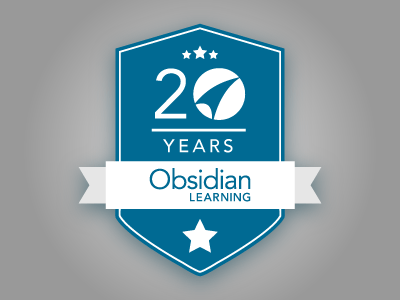A few members of the Obsidian team went to the ATD Houston Technology Expo recently. It was a great networking experience, and we learned a lot (and had a yummy lunch).
Because Obsidian is always exploring the latest learning technologies, particularly mobile technologies, I was especially interested in a presentation on the upcoming CMI-5 spec, which will be the “mobile SCORM.” The presentation was given by Art Werkenthin, President of RISC, Inc., and a member of the AICC CMI-5 committee. Here are my key takeaways from the presentation:
- One limitation of SCORM is that content must be on the same domain as the LMS. With xAPI, content can be anywhere on a Content Distribution Network (CDN), not just on the LMS. This is a critical factor in being able to build learning experiences that draw on blended content.
- In fact, xAPI does not actually require an LMS; data can also be recorded in a stand-alone Learning Record Store (LRS). LRSes will be supported by third-party suppliers (much like OpenID identity providers currently do). Someday, we’ll all have our own LRS that is portable, and so not tied to a specific organization’s LMS. Your transcript will travel!
- xAPI stores results and defines the communication layer. Learning can be recorded wherever it happens, including non-browser events.
- Because xAPI uses modern technology (REST, JSON), it’s much simpler to develop than SCORM.
- However, xAPI does not include the LMS functionality of SCORM (such as course scheduling and reporting). In other words, it’s not the next generation of SCORM.
- CMI-5 is the “special sauce.” It adds the LMS layer to the mix, and so it’s considered the successor to SCORM. CMI-5 is being developed for interoperability, extensibility, and mobile support.
- Art recommended implementing xAPI first to make it easier to move to CMI-5.
As I said, this are just a few points I noted during the presentation. There’s lots more to learn about implementing xAPI and CMI-5. Art has published a great article on CMI-5 that goes into a lot more detail. Here are some other resources to get you going:
- From Float Learning, here’s a fun little interactive piece that shows how xAPI/CMI-5 could work in practice.
- Float has also published several articles on xAPI.
- To satisfy your inner geek, here’s a link to the latest xAPI spec.
Note that the CMI-5 spec has been finalized and is open for public comment. The plan is to release the spec later in 2015.







